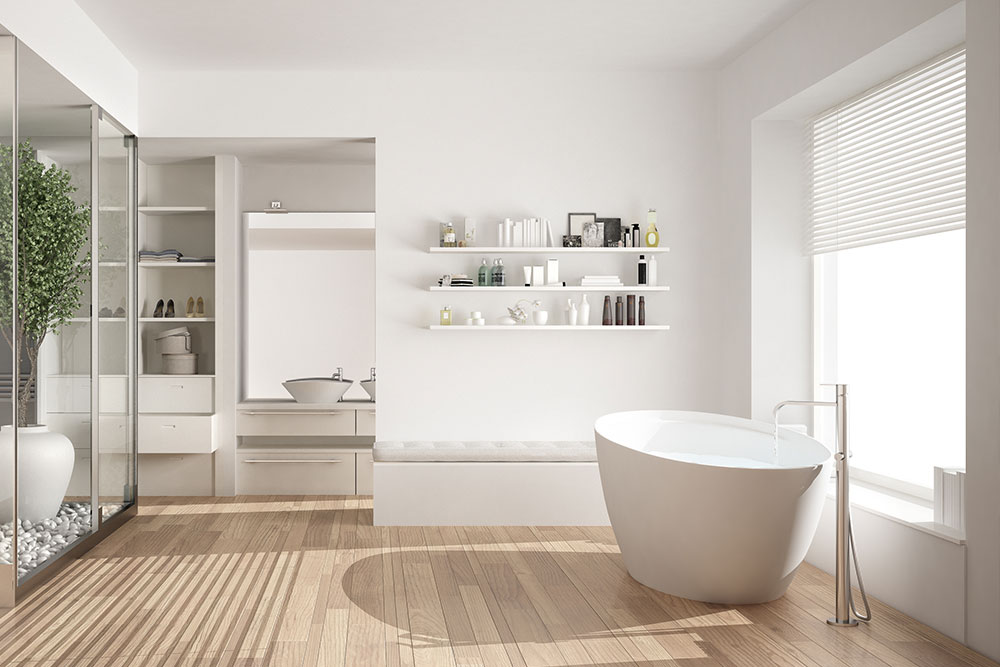Everything you need to know about walk-in bathtubs
People with limited mobility, especially, seniors can find it increasingly challenging to accomplish day-to-day tasks. Even something as simple as bathing can turn into a hazardous activity. In fact, slips and falls in the bathroom are one of the major causes of injuries in elderly individuals. This automatically infers that seniors’ homes should be equipped with bathing arrangements that don’t compromise their safety.

Though walk-in tubs can make everyday life a bit easier for seniors, it comes at a great cost. Its price largely varies from approximately $1,500 to $20,000 based on key features including size, kind, brand, and customization potential. A simple walk-in soak tub will cost almost $5,000 or lower. However, a model that comprises special features like hydrotherapy will require you to shell out anywhere between $5,000 and $7,000.
If you have been mulling over replacing your shower or bathtub with a walk-in variant, the first thing to do is acquaint yourself with the types of models available. All models come with distinctive features which ultimately affects its overall value. Apart from safety, elderly individuals should also consider therapeutic add-ons while switching to a walk-in tub. Here’s a list of different types of walk-in tubs and their respective price range.
- Soaker tub
This is the most basic model that includes a seat, a low-entry step-up, and a leak-proof door. Most of these are equipped with anti-slip floors and seats along with grab bars. However, they don’t offer any air and water jets. An affordable pick, a soaker tub can cost you anywhere between $1,500 and $5,000. - Tubs with air jets
These soaker walk-ins are equipped with air jets for circulating the water so that you could enjoy a therapeutic massage while bathing. Tubs with air jets are often priced between $5,000 and $9,000. - Hydrotherapy tub
Hydrotherapy tubs comprise water therapy that helps ease any tension in the muscles. The price quotes for these are commonly between $5,000 and $7,000. - Combination walk-ins
Combination walk-ins have both, air and water jets. Likewise, they are highly customizable. One can add LED lights and essential oils in such kind of tubs to enhance the therapeutic experience. The cost for these types of walk-in tubs can approximately come around $10,000. - Bariatric tub
These tubs are designed for obese individuals, so they are much spacious than the standard models available. The seller can charge you anywhere from $5,000 to $10,000 for a bariatric walk-in tub.
Installing the walk-in tub is another big-ticket expense. The professionals can charge anywhere between $700 and $3,000. In most cases, the average price comes down to $1,500. Additionally, the overall price of the installation will rise if your bathroom needs a wall surround or new piping work. Extra labor costs might be in the picture too. Moreover, these might be exclusive of the charge involving the removal of your old bathtub. You could save some money on the installation by hiring your own plumber, however, it is important for him or her to be well-experienced with such kind of bathroom fittings.
You’ll only able to get an accurate estimate after you consult the walk-in tub company. Since walk-in tubs require major financial undertaking, many brands offer flexible payment solutions to make it more accessible to seniors and disabled individuals. Some companies also render low-interest financing for qualifying individuals.
Though walk-in bathtubs are expensive, it can be a worthwhile investment for your wellbeing in the long term. Apart from the features and price, it is also crucial that you scrutinize their warranty program to avoid additional maintenance or repair expenses in the future.
Walk-in bathtubs coverage and Medicare
The Original Medicare, Part A, and Part B don’t reimburse expenses for a walk-in bathtub. This is because walk-in tubs aren’t considered to be DME (durable medical equipment) like catheters, wheelchairs, hospital beds, or nebulizers. A walk-in tub is believed to be an item that is used for comfort or convenience which according to Medicare is not medically indispensable. Though, state health programs like Medicaid can help you cover some cost of the purchase. However, you will have to file a claim stating why walk-in bathtub is essential for your personal use along with a doctor’s prescription. Every state practices different regulations pertaining to Medicaid reimbursements, so contact your SHIP (State Health Insurance Assistance SHIP Program) office to know more about it.
Walk-in tubs and tax deductions
Such purchase is only tax-deductible if they are acknowledged to be medically necessary. They can be claimed under medical expenses. If you are a caregiver who has recently purchased and installed a walk-in tub for a loved one, you can use the Dependent Care Tax Credit for deductions.











